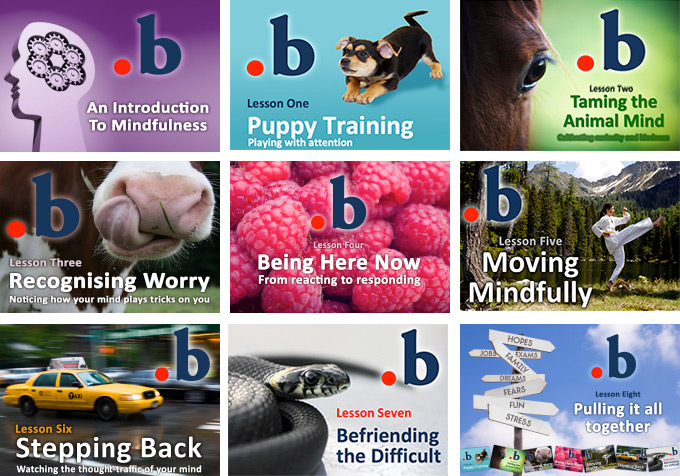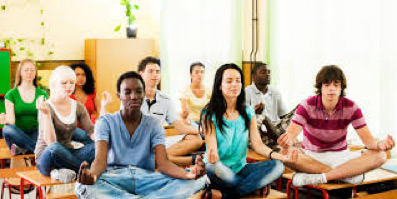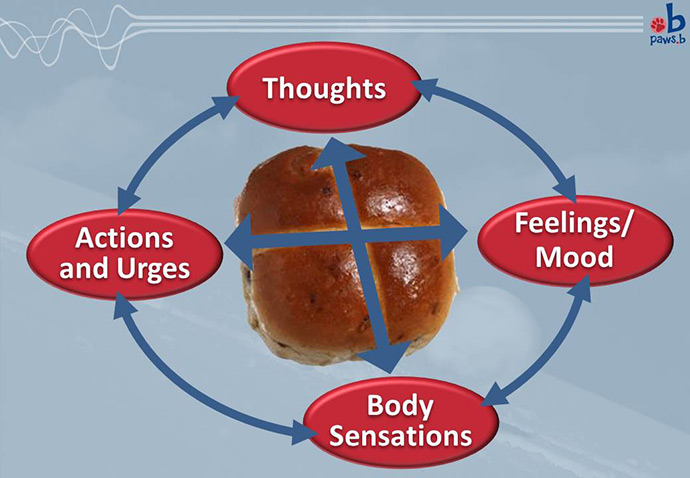- Home
- About
- Treatments
- Mindfulness
- • Introduction
- • What is Mindfulness?
- • .b Mindfulness for Children & Teenagers
- • paws b - Primary School Mindfulness Curriculum
- • Mindfulness for Children & Teenagers
- • Kindness and Self Compassion
- • Mindfulness Based Stress Reduction
- • Drop-in Mindfulness
- • Day of Mindfulness
- • Mindfulness Stress At Work
- • Mindfulness for Illness
- • One to One Mindfulness Sessions
- Workshops/Courses
- Price List
- Testimonials
- Contact
.b Mindfulness for Children & Teenagers (in Schools)
 CHILDREN in a
classroom
near you
may not just be
learning
their seven times tables or their
English
reading — they may well be embracing the practice of mindfulness.
CHILDREN in a
classroom
near you
may not just be
learning
their seven times tables or their
English
reading — they may well be embracing the practice of mindfulness.
Mindfulness invites us to focus on the present moment — to bring mindful attention to our experience as it is happening right now. It’s an approach that helps us become calm and feel good about ourselves. It helps us build inner resources for dealing with daily stressors.
What is .b?
.b stands for “Stop, Breathe and Be!” This simple act of mindfulness provides the kernel of the nine session .b mindfulness course for schools. Written by three experienced classroom teachers and mindfulness practitioners, Richard Burnett, Chris Cullen and Chris O’Neil, .b is carefully crafted to engage everyone, including the most cynical of student audiences. It is taught with striking visuals, film clips and activities that bring mindfulness to life without losing the precision, expertise and integrity of classic mindfulness teaching.
What are the aims of .b?
At the most simple level .b is an awareness-raising exercise to give all students a taste of mindfulness so that they know about it and can return to it later in life if they choose to do so. However, for many pupils the course can lead to immediate and striking results: they feel happier, calmer and more fulfilled; they can concentrate better; they have a toolkit to deal with stress and anxiety. Objectives and outcomes are discussed in more detail below.
Who is .b for?
.b can be taught to timetabled school classes, or to groups of students who volunteer or are specially selected, perhaps to address a problem such as stress, depression or anxiety. The course has been designed to be flexible enough to use in a range of contexts, and is now being used across a wide age range, in state and private schools,in Ireland the UK and across the world. At present the materials are most suited to secondary schools and beyond, but a version of .b suitable for primary schools is being prepared and trialled.

What is the evidence that mindfulness works?
Mindfulness is proving to be effective for adults in helping to address a wide range of physical and mental conditions, and improve wellbeing and the ability to think clearly. The evidence for its effectiveness with young people is showing similar results, and although this evidence base is as yet smaller having only been developed recently, it is very promising and growing rapidly.
For more info on .b go to www.mindfulnessinschools.org
“Mindfulness enables children to know they feel out of kilter emotionally and to find a way to respond to difficult emotions,” says Ann Caulfield.
Children may be small but the chaos and busyness of their lives is big — it’s good to know we can do something to help them find their inner oasis of calm.

Comments from Students after completing .b mindfulness programme
“Mindfulness helped me to accept things instead of pushing them away”
“I don’t really criticise people as much…. some people are the same and some people are different, so after mindfulness I understand why people are different, and you have to accept that you can’t change that.”
“It just helps me to gather up my thoughts, and sort of restart…. I can keep my mind focused, just getting work done, and find the answer to the problems I face.”
“I’ve started to think positively more…”
“I’ve known how to make choices better, and I make better choices – better for me, for now and for my future.”
“It was the only time in the week where I could relax and clear my mind.”
“It enabled me to be able to focus on the present moment, without worrying about exams, results, homework and so on.”

For more details phone Pauline 086 3784747
